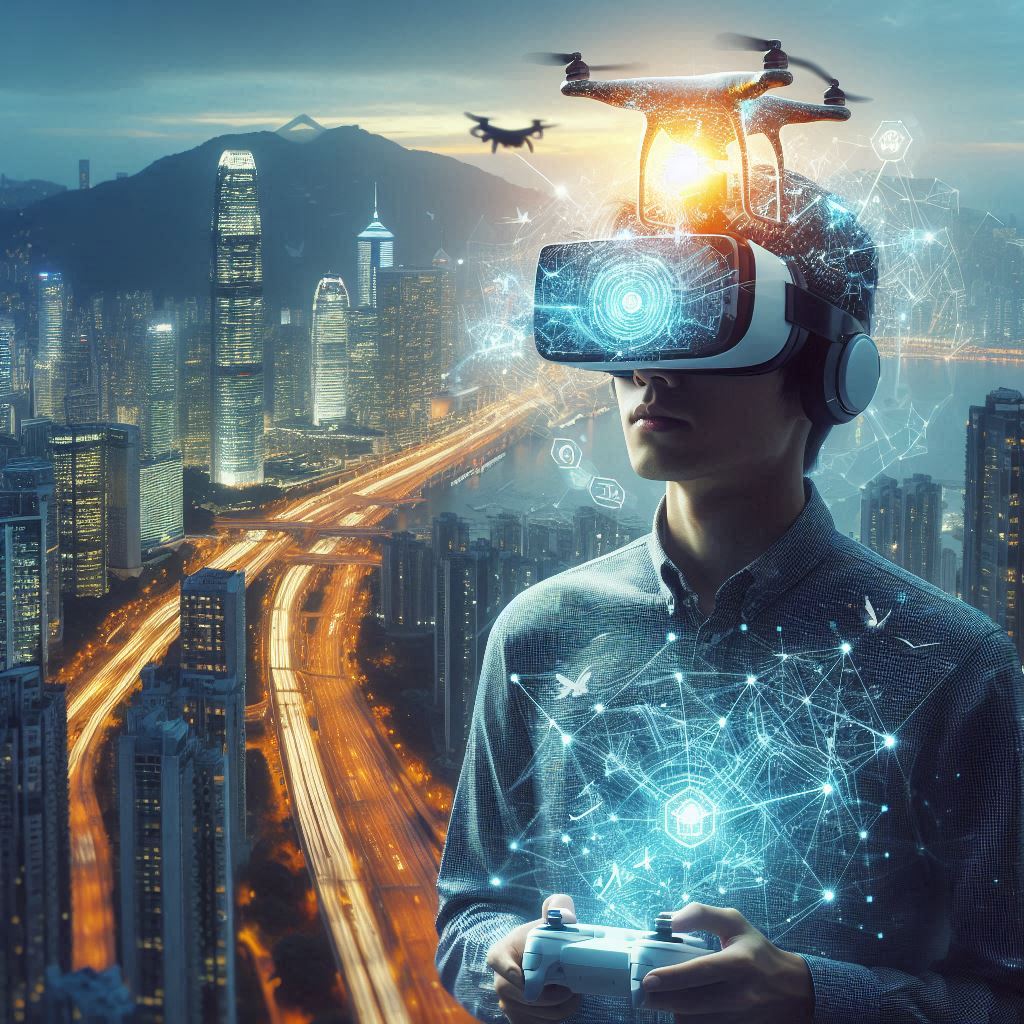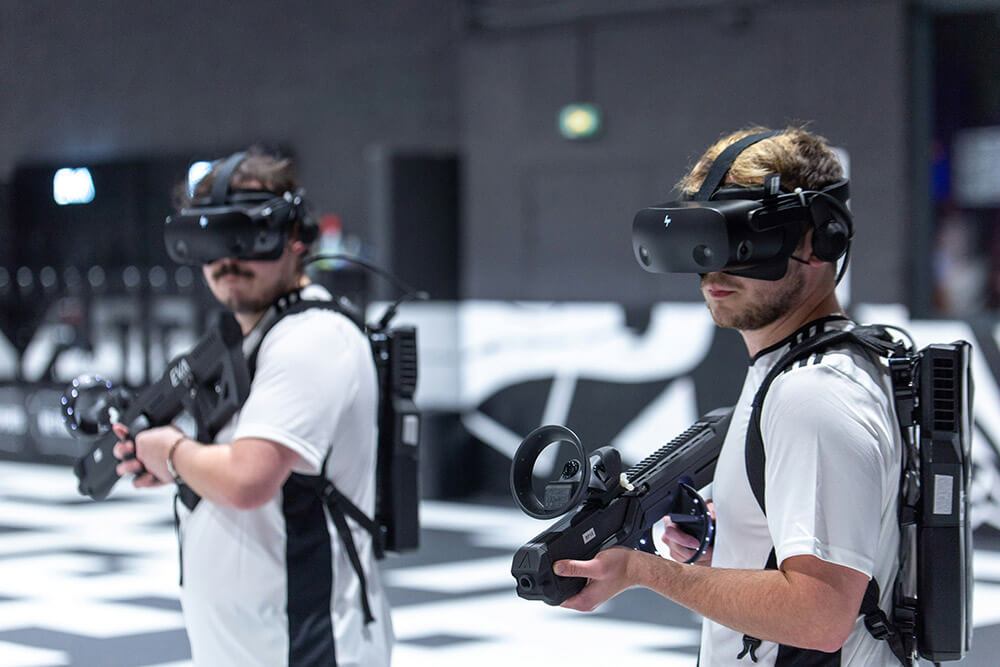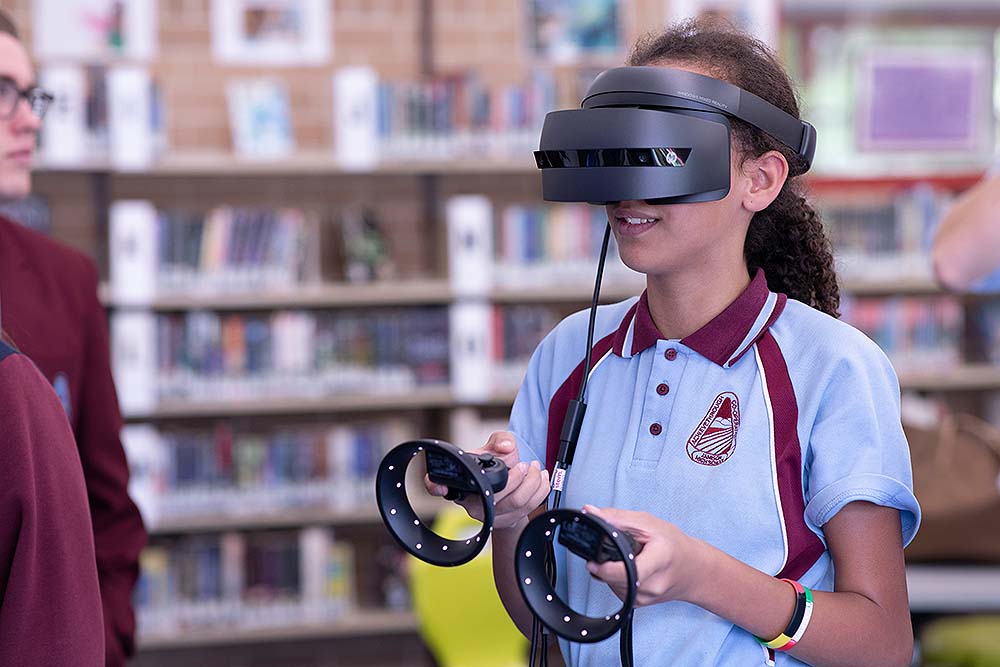
Using drones with VR (Virtual Reality) combines the immersive experience of VR with the aerial capabilities of drones, creating exciting possibilities across various industries, including entertainment, filmmaking, inspection, surveillance, and even gaming. Here’s how the integration works and some key applications:
How Drones + VR Work Together
- FPV (First-Person View) Drones
- Many drones support real-time video transmission to VR headsets (like the DJI FPV, custom-built racing drones, or cinewhoops).
- Pilots wear VR goggles to see exactly what the drone’s camera sees, enhancing control and immersion.
- Head Tracking for Camera Control
- Some setups allow head movements to control the drone’s camera gimbal, letting users “look around” in real-time as if they were onboard the drone.
- Live 360° Video Feeds
- Specialized drones with 360° cameras can stream live VR footage, allowing users to explore the environment in all directions via headsets like Meta Quest, HTC Vive, or PlayStation VR.
- Telepresence & Remote Inspection
- Industrial drones equipped with high-res cameras and LiDAR can provide VR users with a real-time, 3D view of remote locations (e.g., power lines, oil rigs, or disaster zones).
Key Applications
- Cinematography & Live Events
- Filmmakers use drone-VR combos to capture dynamic aerial shots for immersive 360° films.
- Live concerts or sports events can be streamed in VR via drones for a unique spectator experience.
- Search & Rescue / Public Safety
- Emergency responders can use VR to navigate drones in disaster zones, gaining better situational awareness.
- Industrial Inspections
- Drones with VR enable engineers to virtually “fly through” infrastructure (wind turbines, bridges, pipelines) for remote inspections.
- Gaming & Racing
- FPV drone racing becomes even more intense when pilots (or spectators) experience it in VR.
- Some VR games integrate real drone footage for hybrid virtual/physical gameplay.
- Real Estate & Tourism
- Potential buyers can take VR “drone tours” of properties or exotic locations from anywhere in the world.
Challenges & Considerations
- Latency: Low-latency transmission is crucial for a smooth VR experience (5G or Wi-Fi 6 helps).
- Motion Sickness: Fast drone movements in VR can cause discomfort for some users.
- Regulations: Many countries restrict beyond-line-of-sight (BVLOS) drone flights, which may limit VR telepresence applications.
- Cost: High-end VR-ready drones (with 4K+ cameras, LiDAR, or thermal imaging) can be expensive.
Popular Hardware Combinations
- DJI Avata / DJI FPV + DJI Goggles 2 (for immersive FPV flying)
- Custom FPV drones (with analog/digital VTX + VR headsets like FatShark or Skyzone)
- Insta360 Pro 2 (for 360° VR live streaming)
- Autel EVO Max 4T (for enterprise inspections with thermal + VR integration)
Here are some optimized setups for different applications:
1. FPV Racing / Freestyle (High-Speed, Low-Latency VR)
Best for: Competitive drone racing, acrobatic flying, immersive piloting.
Recommended Setup:
- Drone: Custom 5″ FPV quad (e.g., iFlight Nazgul5 or GEPRC Mark5)
- Video Transmission: Digital (HDZero/DJI O3) or Analog (for ultra-low latency)
- VR Headset:
- DJI Goggles 2 (for DJI O3 digital system)
- FatShark Dominator HD (for HDZero)
- Skyzone SKY04X (for analog)
- Controller: *Radiomaster Boxer/TP16* (ELRS for long-range)
Why? Minimal latency (~20ms), high refresh rates (120Hz), and wide FOV for racing.
2. Cinematic Filmmaking (Smooth, High-Quality VR Footage)
Best for: Directors, YouTubers, VR content creators.
Recommended Setup:
- Drone:
- DJI Avata (for ease of use + built-in stabilization)
- FPV Cinewhoop (e.g., GEPRC CineLog35 for GoPro mounting)
- Camera: GoPro Hero12 (for 5.3K) or DJI O3 Air Unit (integrated 4K)
- VR Headset: DJI Goggles Integra (for buttery-smooth DJI video feed)
- Extras: ND filters, ReelSteady stabilization software.
Why? DJI’s transmission is stable, with high-quality footage ideal for post-production.
3. Industrial Inspections (Telepresence + 3D Mapping)
Best for: Engineers, surveyors, remote inspectors.
Recommended Setup:
- Drone:
- DJI Matrice 350 RTK (for LiDAR/thermal payloads)
- Autel EVO Max 4T (for multispectral/thermal imaging)
- VR Headset: Meta Quest Pro (for mixed-reality overlays) or Pico 4 Enterprise
- Software: Pix4D, DroneDeploy (for 3D model integration into VR)
Why? Combines high-res sensors with VR for immersive data analysis.
4. Gaming & VR Spectator Experiences
Best for: Esports, drone racing spectators, immersive gaming.
Recommended Setup:
- Drone: Tiny Whoop (e.g., Mobula7 for indoor racing) or DJI Avata (for sim-like feel)
- VR Headset: Meta Quest 3 (wireless PCVR for simulators like Liftoff: FPV Drone Racing)
- Controller: TBS Tango 2 or DJI FPV Remote Controller 2
Why? Syncs real-world FPV with VR gaming environments.
5. Real Estate / Virtual Tours (360° VR Tours)
Best for: Realtors, travel agencies, tourism.
Recommended Setup:
- Drone: DJI Phantom 4 Pro (for high-res stills) or Insta360 X3 (mounted on a drone)
- VR Headset: Pico 4 (standalone) or Meta Quest 3 (for virtual walkthroughs)
- Software: Matterport, Kuula (for creating VR tours)
Why? 360° imaging + VR gives clients a “walkthrough” feel.
Key Considerations Before Buying
- Budget: Racing setups can be cheap (500+),whileenterprisedronescost500+),whileenterprisedronescost5K+.
- Latency Needs: Analog for racing, digital for cinematic.
- Regulations: Check local laws (BVLOS may require waivers).


